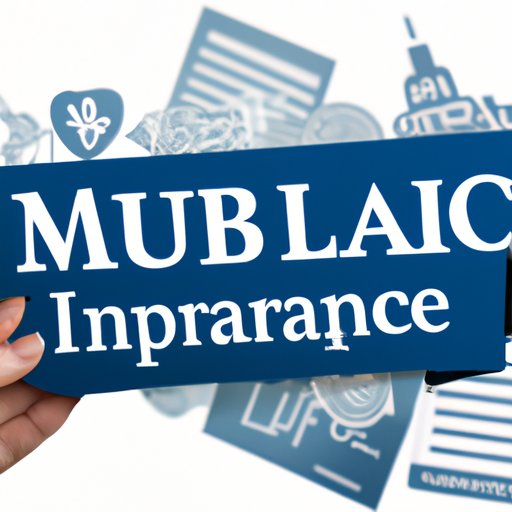Explaining Medicare Basics: A Guide for Beginners
Medicare is a federal health insurance program that provides coverage for people age 65 and over, as well as certain younger individuals with disabilities. The program is designed to help those who are unable to afford private insurance or do not have access to employer-sponsored plans. While it can seem overwhelming at first, understanding how Medicare works is essential for making sure you get the coverage you need.
What is Medicare?
Medicare is a government-run health insurance program that provides coverage for hospital care, medical care, prescription drugs, and other related services. It is funded by taxes and premiums paid by beneficiaries, as well as general Federal funds. Medicare is administered by the Centers for Medicare & Medicaid Services (CMS), a division of the Department of Health and Human Services.
Who is eligible for Medicare and how to enroll?
Most people age 65 and over are eligible for Medicare. People younger than 65 may also qualify if they have certain disabilities or conditions, such as end-stage renal disease or amyotrophic lateral sclerosis (ALS). To enroll in Medicare, you must apply online through the Social Security Administration’s website or call their toll-free number. You will be asked to provide your Social Security number, date of birth, and other personal information.
What are the different parts of Medicare?
Medicare is divided into four parts: Part A (Hospital Insurance), Part B (Medical Insurance), Part C (Medicare Advantage Plans) and Part D (Prescription Drug Coverage). Each part covers different services and has different costs associated with it. Here’s a brief overview of each part:
Part A – Hospital Insurance
Part A covers inpatient hospital care, skilled nursing facility care, home health care and hospice care. You may have to pay a deductible and coinsurance for these services.
Part B – Medical Insurance
Part B covers doctor visits, preventive care, outpatient care, durable medical equipment, mental health services, laboratory tests, and some home health care. You may have to pay a monthly premium and a deductible for these services.
Part C – Medicare Advantage Plans
Part C, also known as Medicare Advantage Plans, is an alternative way to receive Medicare benefits. These plans are offered by private insurance companies and may include additional benefits, such as vision and dental coverage. You will still have to pay a monthly premium and may have to pay copayments or coinsurance for services.
Part D – Prescription Drug Coverage
Part D covers prescription drugs. You may have to pay a monthly premium and a deductible for these services.
How to Navigate the Medicare System: Step-by-Step Instructions
Navigating the Medicare system can seem daunting, but there are several resources available to help. Here are some tips on how to make the most of your Medicare coverage:
How to use the Medicare website
The Medicare website (www.medicare.gov) is a great resource for finding out more information about coverage and benefits. You can search for providers, compare plans, and learn more about the different parts of Medicare. You can also find contact information for Medicare representatives if you have questions or need help.
How to choose a provider and plan
Once you have an understanding of the different parts of Medicare, you can start looking for a provider and plan that best fits your needs. You can use the Medicare website to compare plans and coverage options in your area. You should also consider talking to a trusted health care professional for advice.
How to submit claims
Once you have chosen a provider and plan, you will need to submit claims for any services you receive. This can be done online or by mail. Make sure to keep all documentation in case you need to appeal a claim or file a complaint.

Breaking Down the Costs of Medicare Coverage
In addition to understanding the different parts of Medicare, it is important to be aware of the costs associated with each plan. Medicare coverage includes premiums, deductibles, co-payments, and co-insurance. Here is a brief overview of each cost:
Premiums
Premiums are the amount you pay each month for your coverage. They vary depending on the type of coverage you choose. Most people don’t pay a premium for Part A, but they must pay a premium for Part B and Part D.
Deductibles
A deductible is the amount you must pay before your coverage kicks in. Deductibles vary depending on the plan and your income level. For example, the deductible for Part B is $183 per year in 2019.
Co-payments and Co-insurance
Co-payments and co-insurance are the amounts you pay for covered services after you meet your deductible. Co-payments are usually a fixed amount, while co-insurance is typically a percentage of the total cost. Your plan will specify what you are responsible for paying.

What to Do if You Have Questions About Medicare Benefits
If you have questions about your Medicare coverage or benefits, you can contact your State Health Insurance Assistance Program (SHIP), which provides free and confidential counseling and assistance to Medicare beneficiaries. You can also seek advice from a trusted health care professional or utilize online resources such as Medicare.gov or the CMS website.
Conclusion
Understanding how Medicare works is essential for getting the coverage you need. Knowing the different parts of Medicare, how to navigate the system, and the costs associated with each plan will ensure you get the best value for your money. If you have questions, don’t hesitate to contact your SHIP or seek advice from a trusted health care professional.
(Note: Is this article not meeting your expectations? Do you have knowledge or insights to share? Unlock new opportunities and expand your reach by joining our authors team. Click Registration to join us and share your expertise with our readers.)
